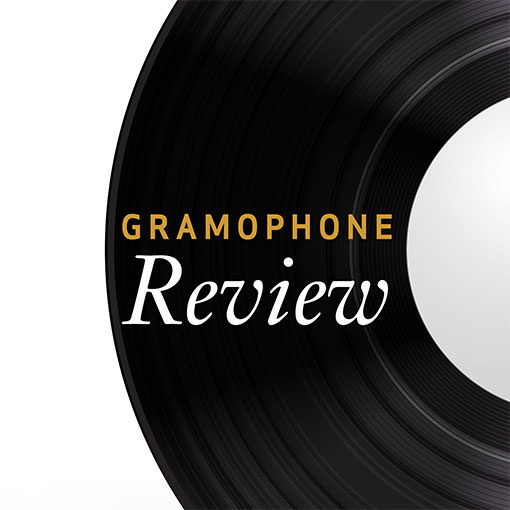Shostakovich Chamber Works
View record and artist detailsRecord and Artist Details
Composer or Director: Eugene Drucker, Dmitri Shostakovich
Label: Philips
Magazine Review Date: 8/1991
Media Format: CD or Download
Media Runtime: 57
Mastering:
DDD
Catalogue Number: 432 079-2PH

Tracks:
| Composition | Artist Credit |
|---|---|
| Piano Trio No. 2 |
Dmitri Shostakovich, Composer
Beaux Arts Trio Dmitri Shostakovich, Composer |
| Quintet for Piano and Strings |
Dmitri Shostakovich, Composer
Beaux Arts Trio Dmitri Shostakovich, Composer Eugene Drucker, Composer Lawrence Dutton, Viola |
Author:
That Shostakovich is not really the Beaux Arts' strong point is immediately suggested by the Quintet's poorly voiced, lumpily accented opening piano solo; and it is confirmed again and again throughout this thoroughly disappointing disc. I fear Menahem Pressler has to take a major part of the responsibilty for this, since the piano frequently has to supply the foundation to the texture and in both works here recorded the foundation he supplies is too often unidiomatic in rhythm and touch. Not that I would exempt the strings from blame—in the Quintet the lower instruments tend to overwhelm important lines in the first violin, and in the Trio Isidore Cohen's initiatives tend to be musically superficial.
There is admittedly one bull's-eye, which is the Scherzo of the Quintet—tough, sinewy and extremely well played, with a perfect something-nasty-on-the-shoe characterization from the cello at 2'40''. Neither the Ashkenazy/Fitzwilliam nor the live Richter/Borodin recordings, on Decca and EMI respectively, are to be preferred here; but it is astonishing that at 0'32'' in this movement Pressler plays four obviously misprinted notes as written—a quick check with composer's own recording (Chant du Monde—not submitted for review) would have verified the misprint. Elsewhere the rival recordings display far superior insight; my inclination would be to direct newcomers to the more richly recorded Ashkenazy/Fitzwilliam and connoisseurs to the more impassive Richter team.
The scherzo movement goes well in the Trio too, though Pressler does not have quite the articulation or depth of touch and rhythmical grasp to extract its full potential. And the more flowing tempo makes a more moving experience out of the following Passacaglia than the Trio Zingara's rather static account (on Collins Classics). Otherwise it is the young British musicians who display the better grasp of underlying ebb and flow—their first movement is more sensitively paced (the Beaux Arts's change of gear at 3'35'' is so unconvincing I wondered whether it was the same take), their finale accumulates far more expressive force, and generally they sound much better prepared. The Beaux Arts are richly recorded by Philips, but as interpretations their Shostakovich cannot be recommended.'
There is admittedly one bull's-eye, which is the Scherzo of the Quintet—tough, sinewy and extremely well played, with a perfect something-nasty-on-the-shoe characterization from the cello at 2'40''. Neither the Ashkenazy/Fitzwilliam nor the live Richter/Borodin recordings, on Decca and EMI respectively, are to be preferred here; but it is astonishing that at 0'32'' in this movement Pressler plays four obviously misprinted notes as written—a quick check with composer's own recording (Chant du Monde—not submitted for review) would have verified the misprint. Elsewhere the rival recordings display far superior insight; my inclination would be to direct newcomers to the more richly recorded Ashkenazy/Fitzwilliam and connoisseurs to the more impassive Richter team.
The scherzo movement goes well in the Trio too, though Pressler does not have quite the articulation or depth of touch and rhythmical grasp to extract its full potential. And the more flowing tempo makes a more moving experience out of the following Passacaglia than the Trio Zingara's rather static account (on Collins Classics). Otherwise it is the young British musicians who display the better grasp of underlying ebb and flow—their first movement is more sensitively paced (the Beaux Arts's change of gear at 3'35'' is so unconvincing I wondered whether it was the same take), their finale accumulates far more expressive force, and generally they sound much better prepared. The Beaux Arts are richly recorded by Philips, but as interpretations their Shostakovich cannot be recommended.'
Discover the world's largest classical music catalogue with Presto Music.

Gramophone Digital Club
- Digital Edition
- Digital Archive
- Reviews Database
- Full website access
From £8.75 / month
Subscribe
Gramophone Full Club
- Print Edition
- Digital Edition
- Digital Archive
- Reviews Database
- Full website access
From £11.00 / month
Subscribe
If you are a library, university or other organisation that would be interested in an institutional subscription to Gramophone please click here for further information.





